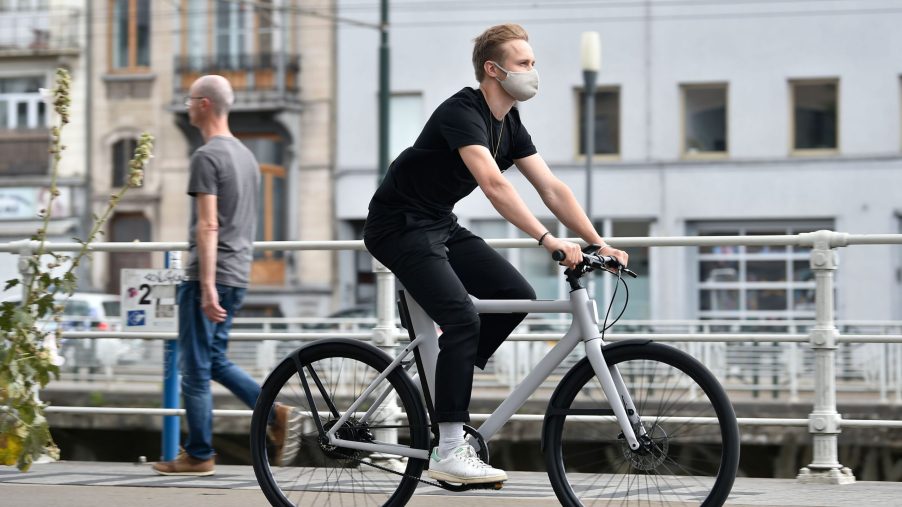
Do You Have To Pedal an E-Bike?
Long popular in Europe, e-bikes are now seeing a surge of demand in the United States. If you’re unfamiliar with them, however, e-bikes might seem a bit daunting. How exactly do they work? How are they different from regular bikes? And do you actually need to pedal them? (Yes — but only sometimes.)
How e-bikes work
Related: This Electric Car and Bike Could Be the Best Eco-Friendly Dream Garage
Also sometimes called a “pedelec” for “pedal electric bicycle,” e-bikes contain a small electric motor within their frames. There are two main types of bikes: those with motors mounted near the crankset, known as mid-mounts, and those with motors on the hub.
Bicycling.com notes that while hub-based e-bikes are more affordable, mid-mount systems are becoming significantly more popular, and are on their way to becoming the standard.
In order to be classified as an e-bike, U.S. federal law dictates that the motor cannot power the bicycle at speeds faster than 20 mph. This means that the motor is prohibited from producing more than one horsepower, or 750 watts.
The three-class system

When it comes to these bikes, it’s common to wonder whether you actually have to pedal them. The simple answer is that it depends. There are three different classes of bikes.
Bosch defines them as: class one, which has no throttle and a maximum speed of 20 mph; class two, which is throttle-assisted with a maximum speed of 20 mph; and class three, which has a maximum assisted speed of 28 mph and no throttle.
You must always pedal class one and class three e-bikes, as they have no throttle and therefore cannot simply power themselves. However, class two does not require pedal assistance from you. If you choose, of course, you certainly can pedal them — but it isn’t required in order for the bike to move.
Interestingly, the class you choose can have a significant impact on where you’re able to ride it. While class one bikes are often (though not always) treated like regular bikes in cities, class two and three bikes have some restrictions.
Class two bikes are often barred from mountain bike trails, as their throttle power can cause damage to the trail. Bosch also reports that some places, such as Michigan and New York City, have placed additional restrictions on where class two bikes may be used.
Class three bikes are barred from bike trails or other shared pedestrian paths due to their high speed. However, they are allowed on roadside bike lanes.
How do e-bikes differ from standard bicycles?
So they have electric motors — but just how much of a difference does that make? As you might guess, the biggest difference between e-bikes and regular bikes is speed.
Bicycling.com notes that the extra boost is particularly useful on flat roads or inclines, as electronic bikes have a 2 to 3 mph advantage over standard bikes in those settings. On declines, however, it’s easy to go faster than the 20 mph limit imposed on these bike motors. Here, both bikes are true equals.
Another area where e-bikes differ from regular bikes is the weight. Due to the heavy battery pack and the extra frame reinforcement it necessitates, you can expect most electronic bikes to be about 20 pounds heavier than a comparable standard bike.
Finally, and perhaps most importantly, these bikes can be significantly more expensive than regular bikes. If you ride frequently in a flat area or struggle up hills, though, this extra expense may be worth it.
There’s no doubt that the boost in speed is exhilarating. And if you opt for a class two bike, you can give your legs a rest without even needing to stop riding — sounds like a win to us.


